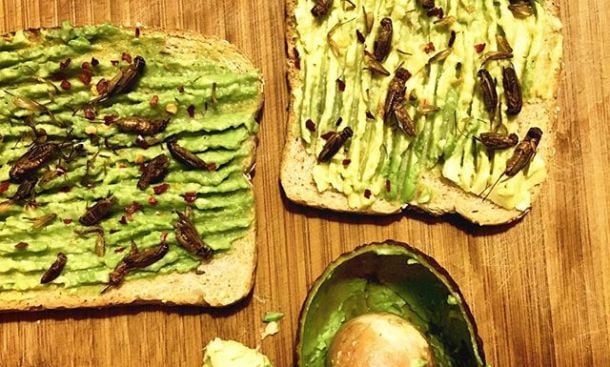One of 15 startups pitching at Rabobank’s recent Foodbytes! event in San Francisco, Israeli firm Hargol Foodtech is blazing a distinct trail in the embryonic edible insect sector by focusing on grasshoppers, rather than crickets.
From a flavor perspective, grasshoppers have a blander and less distinctive taste, making them more appealing to food formulators, he claimed: “Grasshoppers are almost neutral in taste and flavor. We see a lot of potential in meat replacement products, sports protein powders and all kinds of snacks, nutritional supplements, and medical foods.”
70%+ protein by dry weight
Grasshoppers are also “the most widely eaten insect in the world, consumed by 2.5bn people across Asia, Africa, and Central America and they are both kosher and halal,” added Tamir, who has raised $2.5m from investors in the US, Singapore, Israel, and the Netherlands to get the bug-fueled business off the ground.
What’s most exciting about grasshoppers, however, is their nutritional profile, said Tamir, who is raising grasshoppers with 70%+ protein by dry weight and all the essential amino acids, plus omega-3, omega-6, iron, zinc, folic acid, and chitin.
Grasshoppers can be grown more efficiently than crickets
From an operational perspective, meanwhile, grasshoppers can be grown more cost-effectively than crickets, he claimed: “Crickets do not fit intensive farming; they live as individuals and tend to die [if you raise them in] high densities. Grasshoppers have a tendency to swarm, which makes them best suited for intensive farming.
“At Hargol Foodtech, we’ve developed innovative methods and technologies to grow grasshoppers on a commercial scale in a climate-controlled environment, which enables us to grow them year round. We’ve reduced the incubation period of the eggs from 40 weeks to 2 weeks, increasing the number of lifecycles from one to 10 per year. The cages we developed for vertical farming also enable us to grow 10 times the biomass per square foot [of land].
“With our technology, grasshopper farming is efficient and scalable.”

We still need to tackle the yuck factor
Right now, Hargol Foodtech is feeding its grasshoppers wheat grass and corn, but is also researching alternative options, he said.
The production process is simple, said Tamir. At harvest time, the temperature is dropped until the grasshoppers become dozy. They are then frozen, dried in ovens, and milled into fine powder.
Right now, said Tamir, the focus is selling whole grasshoppers to the foodservice market and milled grasshopper powder to food manufacturers in the US and Europe, while the company is also collaborating with manufacturers to co-develop innovative grasshopper protein based products and may develop its own consumer products in the field of supplements or medical foods.
“As much as the market is huge, we still need to tackle the yuck factor and our strategy is joint ventures and pilots with leading food producers around the globe… they will help us educate the market.”

"There are about 8,000 species of grasshoppers globally. Not all of them are edible, however. We started five years ago by collecting 20 different species of grasshoppers found in Israel. With four different species, we managed to acclimatize and shorten the incubation period of the eggs.
"Since from a regulatory point of view it is legal to grow only a single animal in a farm, and we also wanted to remain as focused as possible, we chose a single grasshopper species that met our requirements of superior nutritional content, neutral taste and flavor, existing demand in a variety of markets and efficient growth rate."
Dror Tamir, cofounder and CEO, Hargol Foodtech


